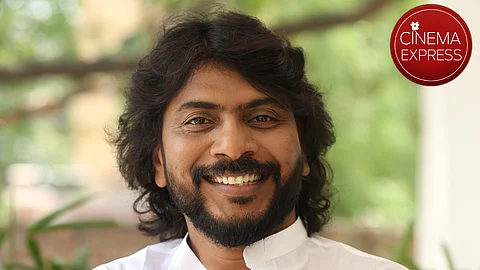

When director Sampath Nandi wrote Odela Railway Station, a supernatural thriller that became a sleeper success in Telugu cinema, he had no sequel in mind. However, something about that world lingered within him. “We gave a lead at the end hoping that if an opportunity to make a sequel arises, we could do it,” he says and adds, “The first part was a huge success. They even bought the Tamil rights and there was a proposal to remake it in Hindi. That’s when director Ashok asked me to write a sequel for the film.” The result is Odela 2, a follow-up that takes a more mythic leap than its predecessor. The film features Tamannaah Bhatia, in what the team calls her most distinct avatar yet. She plays a 'Naga Sadhvi', a barefoot ascetic with potent spiritual powers, drawn into a battle between divine and spectral energies.
“To put it simply, this film is about Soul versus supernatural powers." Soul versus Paramatma (supreme soul),” says Sampath. Tamannaah, whom Sampath had already worked with on Raccha (2012) and Bengal Tiger (2015), became the first choice for the role. “I told her she is a very good performer and would be suitable for this character. Initially, she was skeptical but my faith gave her confidence,” he notes.
However, crafting her costumes and look turned out to be more complicated than they expected. “We tried three looks. Tamannaah has a lighter skin tone while Naga saints have a darker skin tone. No matter how many trials of makeup we tried, it looked artificial,” Sampath recalls. “The Naga sect includes a number of saints from other countries. Tamannaah's skin becomes pinkish when she is exposed to the sun. So, we thought we would do it without any makeup. It took a lot of time and meticulousness to prepare this look.” According to Sampath, the actor went further than just physical transformation to bring her character to life. “Tamannaah gaaru walked barefoot in the sun for this film and became a vegetarian. I think she was able to pull off this role effortlessly because she was on this transformative journey.”
The scale of the film, particularly in terms of visual effects, has significantly expanded since the beginning of its production. Expressing his happiness and satisfaction, Sampath says, “Odela 2 has the VFX quality that are on par with Indian superstar films. Around 150 experts have been working on this movie for the last six months.”
Similarly, Ajaneesh Loknath’s music also plays a key role in creating atmosphere of the film. “The first technician who signed on the dotted line for this story was Ajaneesh,” says the director. “The reason to approach him was Kantara. The background score in this film is extraordinary and I consider his music to be the biggest blessing for this film.” Despite the comparisons drawn to other female-led spiritual thrillers like Arundhati, Sampath is quick to clarify, “While it may seem to be that way in the trailer, Odela 2 bears no resemblance to Arundhati. This is a battle between a ghost and a Panchakshari mantra. It’s more spiritual in theme.”
Sampath is also all praise for producer Madhu. “He is a very passionate producer. When I tell him an idea, he executes it immediately. I told him to launch this film in Kashi and he approved it without any further thought. Launching the teaser at the Maha Kumbh was also possible only because of his passion. This film was made with strong will.” When asked if a third part is in the works, Sampath hesitates to make a prediction. “We can’t plan anything for films like Odela 2,” he says, “I think only God should guide us.”
The filmmaker, known for star-led commercial ventures like Gautham Nanda and Bengal Tiger, admits that something shifted in his personal life that marked his departure from the genre. He shares, “It’s been eight years since my wife installed a Shivalinga in our house. I have also been reading some books about Lord Shiva. I suppose they were all tucked away in my subconscious and found their way into this film.”
As for what’s next, Sampath is working on a film with actor Sharwanand which is based on real incidents from a village in the Maharashtra–Adilabad border, set in the 1960s.